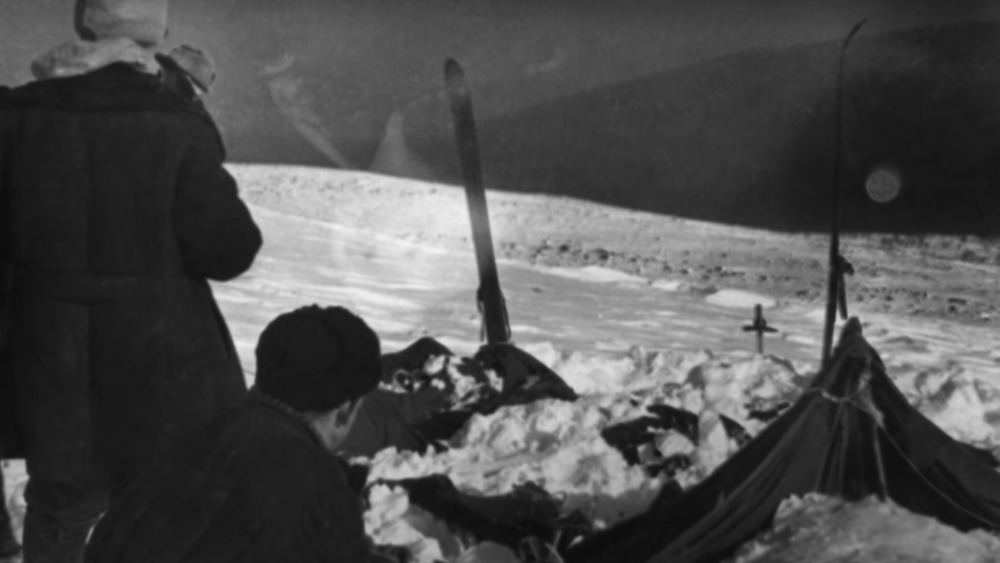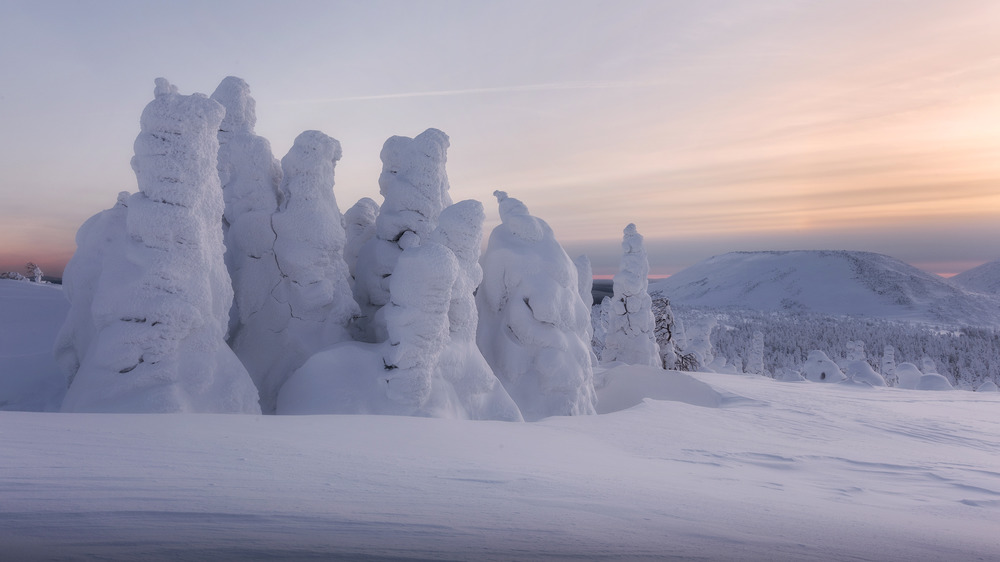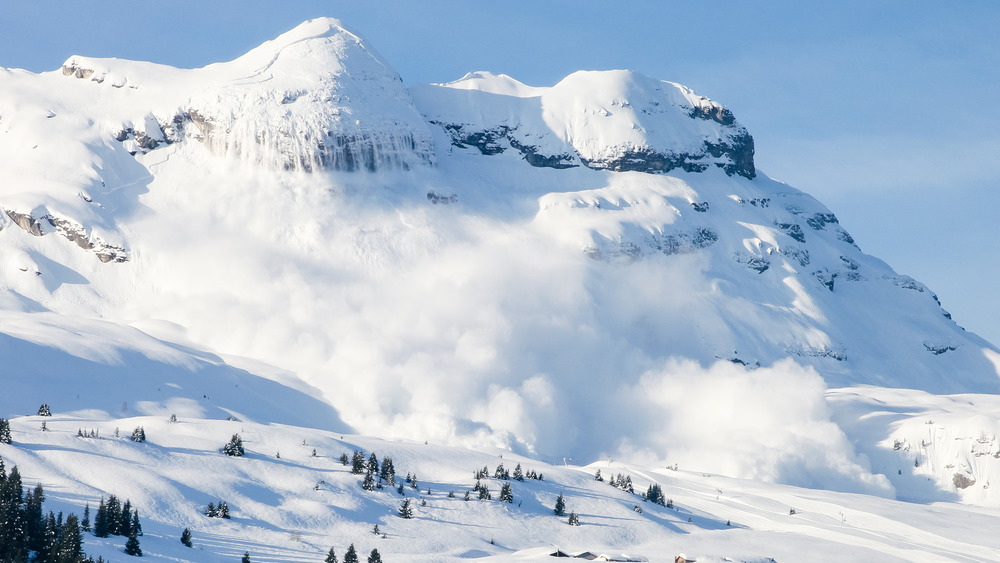The Mystery Of The Dyatlov Pass Incident Seems To Have Finally Been Solved
In February 1959, a search party was sent deep into the Ural Mountains of western Russia in a desperate attempt to find a group of nine Russian hikers who had gone missing. The party found evidence of the hikers' campsite, but it would take months before all the bodies were found. And with each body, more questions came up than answers provided. The ordeal would become known as the Dyatlov Pass Incident.
A Soviet criminal investigation at the time determined that "a compelling natural force" led to the death of the Dyatlov group (named after the team's leader), Reuters reported. That force was never identified, although many understood it to be an avalanche. And while hypothermia was named as the primary cause of death, several hikers suffered frighteningly severe injuries: four had severe thorax or skull injuries, two were found with missing eyes, and one was missing their tongue. Some were found in various states of disrobement and barefoot. For those who did have clothing, traces of radioactivity were found on them.
No answers on the Dyatlov Pass Incident led to conspiracy theories
With each detail (and without any firm answers), conspiracy theories snowballed for decades, some insisting an avalanche would not produce the kind of carnage investigators found. Stories of a military cover-up, a UFO sighting, an abominable snowman attack, and radiation fallout from secret weapons tests spread across the globe. It didn't help that the Soviets seemed dispassionate about getting to the bottom of things, and even appeared to engage in a cover-up at the time, according to The Atlantic. When Russia revisited the event on the 60th anniversary in 2019, they turned up no better answers, Reuters reported last year.
Some of that may be starting to change with new research. In a new study published in Communications Earth & Environment, a pair of scientists based in Switzerland now suggest a few answers to some of the hiccups in the Dyatlov Pass Incident avalanche theory. Johan Gaume, head of the Snow Avalanche Simulation Laboratory (yes, that's a real thing) at École polytechnique fédérale de Lausanne, and Alexander Puzrin, chair of geotechnical engineering at ETH Zurich, studied the archives in Russia about the incident. Then they applied the latest research on avalanches, as well as state-of-the-art computational simulations and modeling.
Swiss researchers find answers by turning to Frozen and crash-test cadavers
What the researchers found is that a type of snowslide called a "slab avalanche" could account for some of the unanswered questions, including the presence of injuries on some of the hikers that aren't normally associated with avalanche victims, according to Smithsonian Magazine. Gaume turned to the creators of Frozen, the Disney film with highly realistic snow simulation, and modified the code to see what an avalanche striking sleeping students would do to them. They learned that it would take just a large block of icy snow to create the grizzly results the rescue party found in 1959.
Gaume and Puzrin also used seatbelt research done in the 1970s by General Motors. In that research, GM used cadavers to see what speed at impact would result in broken ribs and other trauma. The Swiss researchers found it helpful to know how the Russian hikers would have been physically injured when pinned against a solid object, because they would have been sleeping on their skis.
In all, the research done by Gaume and Puzrin shows that an avalanche was highly plausible, but they fully admit that they haven't proven anything. "Personally we do not believe that the mystery can ever be solved because no one survived to tell the story," said Gaume in a short film about the paper [via YouTube]. "What we did in our paper is to show the plausibility of the avalanche hypothesis based on solid physical and experimental evidence."


